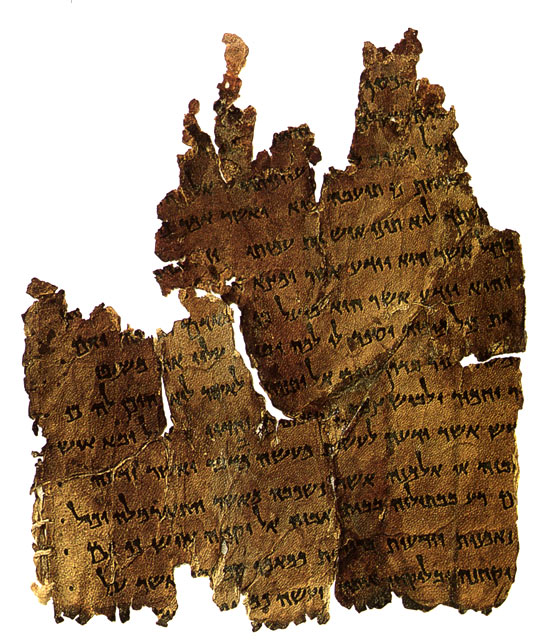
What are the Dead Sea Scrolls? They are a series of ancient Jewish manuscripts discovered between 1946 and 1956 on the northern shore of the Dead Sea.
The first of the scrolls were found in 1946 by Bedouin shepherds. They were discovered in a cave near to the Dead Sea. The story is that a goat wandered into a cave and a shepherd threw a stone into the cave to scare it out. They heard the sound of breaking pottery. They went in to see what it was and they found scrolls and fragments of scrolls contained in 7 clay jars. They didn’t know what they were and they ended up selling them to a local archaeologist.
The scrolls came to international attention, but the Arab-Israeli War stopped people from going into the area. After the war ended, a Dominican monk called Roland de Vaux went searching. He ended up finding rooms, gardens, hundreds of plates, many more jars, and three inkwells. Other scholars joined in and over the next ten years archaeologists searched for more of them. They found scrolls stored in 11 caves altogether, totaling over 15,000 pieces of scroll. Over the years, more pieces have been found in different caves and the pieces have been put together to make 981 different manuscripts. All of the manuscripts are currently held by Israel in their Shrine of the Book museum. Many of these scrolls are written in early Hebrew, but a lot are also written in Aramaic, which is the language that Jesus would have spoken.
So, what are the scrolls? They are mostly religious scrolls that were written between 300 BC and 100 AD. 40% of them are copies of texts from the Hebrew Scriptures. 30% of them are religious texts that were not included in the Hebrew Bible. The last 30% are sectarian manuscripts. The scrolls have survived for over 2,000 years because the caves they were found in are made of limestone, which very quickly absorbs any water and moisture. The area is also very hot and dry, which is one of the reasons why the Dead Sea is so salty. As well as this, when the parchments were made, salt was used to dry them. All of these things have kept the scrolls very dry and preserved them. In fact, the scrolls are starting to decay and fall apart now that they have been found. Unless they are very carefully stored in climate and humidity-controlled rooms, they won’t last very long. Interestingly, when the parchments were analyzed, the salt crystals inside them came from many different places, indicating that the scrolls were not all produced in the same place but brought together from different lands.
The scrolls are incredibly useful because they provide an image of Judaism and the early days of Christianity. They also give an insight into the way that the Bible was put together. In the early days, there were far more scriptures around than those that actually made it into the Bible. A lot of the scrolls are also copies of parts of the Bible and it is possible to see that there were different versions of many of the scriptures that ended up in the Bible. Later Christians would say that the Bible was a gift from God and was basically given to man fully formed, but the Dead Sea Scrolls show that it was actually a long editing process where people were selecting what should and should not be contained in the Bible. The people who were collecting these different scrolls didn’t mind having more than one version of a story. They believed that there were many ways of interpreting a message and they were open to different ideas. It is quite ironic that the Bible became something so literal that followers wouldn’t forgive any changes or misinterpretations.
Nobody knows who wrote the scrolls, although there are several theories. The most likely theory is that they were written and collected by an ancient Jewish sect called the Essenes. They lived in many places, but many modern archaeologists say they lived in a settlement at Qumran, which is where the Dead Sea Scrolls were found. If this theory is correct, then the Essenes wrote and gathered all of the scrolls before hiding them in caves and disappearing. This would most likely be between 66 and 68 AD during the Jewish-Roman war. The Romans killed many Jewish people and took their land and property. The Essenes could have hidden the scrolls in the caves thinking they would come back for them later, before being massacred. And this is what I learned today.
Image By https://www.loc.gov/exhibits/scrolls/images/damasc-b.jpg – Library of Congress, CC0, https://commons.wikimedia.org/w/index.php?curid=19531789
Sources
https://www.history.com/news/6-things-you-may-not-know-about-the-dead-sea-scrolls
https://www.smithsonianmag.com/history/who-wrote-the-dead-sea-scrolls-11781900/
https://en.wikipedia.org/wiki/Dead_Sea_Scrolls
https://www.imj.org.il/en/wings/shrine-book/dead-sea-scrolls
